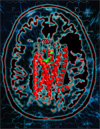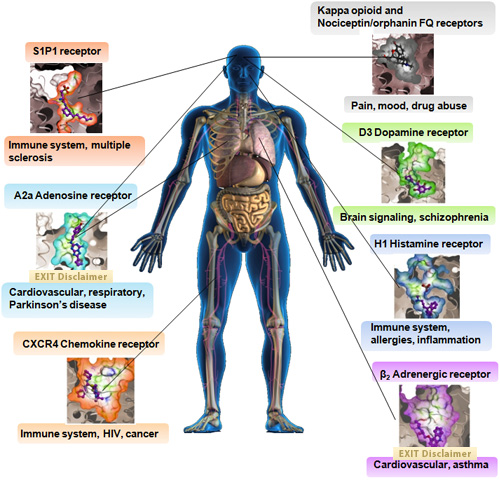Program Snapshot
The Common Fund’s Structural Biology program is developing novel methods to isolate large amounts of membrane proteins and determine protein structure. Proteins that reside in cellular membranes perform many critical functions in our cells and each protein has a unique three-dimensional structure that allows it to fulfill its specific role by defining how it interacts with other cellular components. Membrane proteins that don’t perform as they should in diseased tissue are major targets for drug therapy. However, it is challenging to develop drugs with few side effects without knowing the structure of the protein target and which surfaces the drug interacts with. Membrane proteins have been particularly resistant to having their structure determined since the methods used to isolate them for structure determination can destroy them.
Read more…
Access program generated protocols and reagents
Program Highlights

Researchers publish methods and tools to aid in protein structure determination
Read more...

Researchers Discover Structure of Opioid Receptors
Read more...

Common Fund Researchers Uncover Structure of Important Target For Drug Design
Read more...

Structure of allergy-causing histamine receptor revealed
Read more...
View More Highlights
Program Highlight
Structural Biology grantee wins Nobel Prize in ChemistryDr. Brian Kobilka, grantee of the Common Fund Structural Biology program, has been awarded the 2012 Nobel Prize in Chemistry for groundbreaking studies on G-protein coupled receptors.
G Protein Coupled Receptor (GPCR) structures solved to date through the Joint Center for Integral Membrane Protein Technologies-Complexes (JCIMPT-Complexes)

In 2007, Common Fund support of pioneering methods in membrane protein production resulted in the determination of the structure of the β2 Adrenergic receptor. Since then, these methods and others have rapidly accelerated GPCR membrane protein structure determination, as shown above.
Why care about GPCRs?